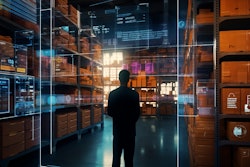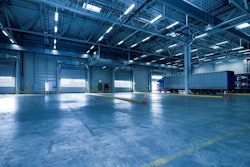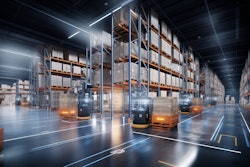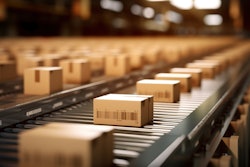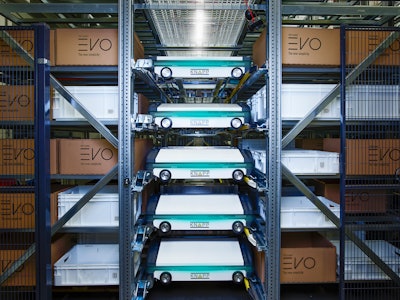
Emerging technologies are reshaping the future of supply chain. It’s these disruptive technologies that are altering the way organizations do business. They’re creating alternative means of connecting data, providing visibility, enforcing safety and more.
Food Logistics talks exclusively with Greg Lary, senior systems manager, KNAPP Inc., about its new product introductions in the sub-freezing temperature space.
CLICK HERE to read the article in full.
Food Logistics: Emerging technologies are on the rise, everything from AI and IoT to cloud-based, digital transformation and future-proofing the supply chain. What do think is attributing to the growth in adoption of emerging technologies?
Greg Lary: COVID-19 impacted supply chains globally, but perhaps no industry was more adversely affected than food and grocery. The process of venturing into a grocery store and hand selecting one’s own groceries was a process that had gone nearly undisturbed for over a century. In mid-2020, the demand for curbside pickup and home delivery skyrocketed seemingly overnight as shopper preferences had drastically changed.
In response to this, the adoption of emerging technologies such as micro-fulfillment, robotics and AI-driven software together with supply chain and network changes has been aggressively researched by leading grocers to limit the impact of labor constraints and changing consumer behavior. If another pandemic-like event was on the horizon, grocers must be prepared for products to continue moving with the understanding and expectation that they may be operating with a limited human workforce, and the way in which consumers prefer to source and receive their groceries will likely have a profound impact on their business model.
Food Logistics: What kinds of emerging technologies has your company introduced within the last 12 months? Anything on the horizon that will be introduced soon?
Lary: In 2023, KNAPP’s first frozen shuttle installation went live at Shufersal in Israel. Operating down to -18°F. The operation allows for frozen “each picking” to support Shufersal’s digital e-commerce operation. KNAPP views this is as a major opportunity for its customer base, as labor in sub-freezing temperatures is some of the most expensive and difficult to source and retain.
In 2024, KNAPP finished commissioning a comprehensive, multi-phase, mixed load palletizing solution at the Kroger Great Lakes distribution center. This solution includes pallet AS/RS, shuttles, conveyor, KiSoft Genomix, KiSoft WCS and a high-velocity palletizing solution that allows Kroger to consolidate warehouse operations, reduce space used and deliver store-friendly pallets.
From a software perspective, one emerging technology is KNAPP’s introduction of “Genomix” to help fight the challenge of incomplete master data. Working closely with GS1, Genomix helps clients rapidly and cost effectively build a stronger quality of SKU dimensions and packaging characteristics, (up to 60 elements). This helps ensure that SKU’s that are not deemed “automation friendly” are removed in order to avoid impacts to system performance.
Food Logistics: What advice do you have for those companies who haven’t implemented any form of emerging tech whatsoever or are just starting the journey? Where/how should they start?
Lary: Companies should speak with multiple vendors and find one who makes the organization feel comfortable and heard. A comprehensive analysis of existing and future challenges, and how to solve them, must be inherently understood. We believe that this should involve multiple steps that includes a detailed assessment of data, software and mechanization.
Make the best use of the research and information available, leveraging expertise from all potential sources. Every project comes with learnings and experience that can be utilized to make transformative changes to the organization.
Food Logistics: How can companies decipher which kinds of emerging technologies are best for their supply chain?
Lary: Vendors that have successfully deployed their technologies will have references and case studies available. Encourage a transparent exchange of information so that the business case of the technology is evident and meets your needs. While similarities between customers can exist based on revenue, industry, etc., there is no “one size fits all” and the technology should be treated as such.
Food Logistics: What are some things not addressed above that may be pertinent to our cold food chain readers?
Lary: The increasing preference towards fresh and perishable commodities has resulted in a sharp increase in the cold chain solutions need. Accompanying this is the growth in demand for “ready-to-cook “convenience meals. These market drivers have a direct effect on the need for emerging technologies and will result in faster adoption of new technology. We would expect a spike of investments into software and mechanics that can exist in sub-freezing temperatures to help alleviate the labor void in this environment.
CLICK HERE to read the article in full.





